The facts (courtesy of Back2Stonewall.com):
David Ashfield was one of the biggest names of 1980s porn, making dozens of movies and appearing in plenty more as a stunt dick.
He was slim, born in 1960, had a huge and thick cut penis and topped (although he started off as a bottom in early Falcon loops).
David starred in movies like Below the Belt, and was famous for big ejaculations.
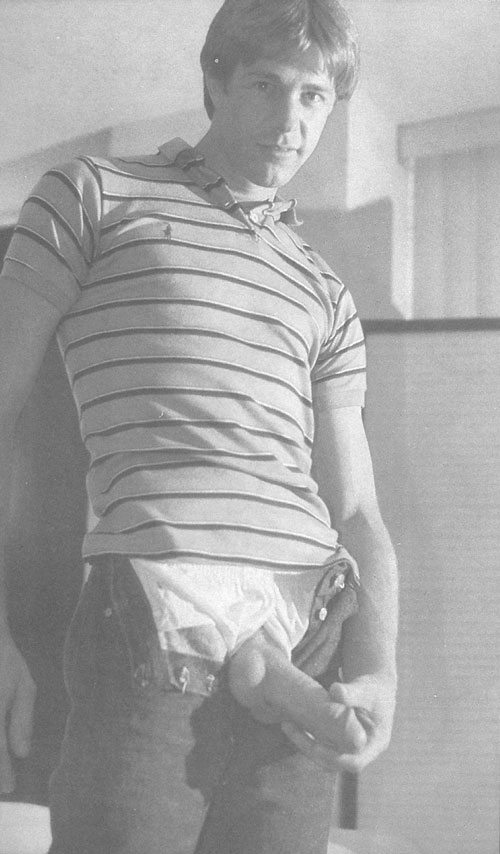 David speaks for himself; passages from an interview in the October 1987 issue of Hot Shots:
David speaks for himself; passages from an interview in the October 1987 issue of Hot Shots:
“Fantasies started to come along when I was about 12 years old … I grew up in the desert in Arizona. So of course, I had dreams and fantasies of long blonde-haired country boys; and grass and trees; playing in the woods; you always dream of what you don't have.”
“Do you find it more exhilarating with a live audience?"
"No, because it's a totally different trip. When we're doing the movies we're in a corner, just us and the cameraman; it's still pretty much private, even though there are people there. Everyone knows exactly what's going on, and are all part of the deal. Whereas when I'm on stage I'm a spectacle. I try to be a trouper and do a good job of it, bring out the Scorpio side of my image, but, a lot of times I still get the willies.”
“For the record, what is the main feature about your cock that makes you stand out in a crowd?"
"A lot of guys have a dick as long as mine, but most people don't have one as fat as mine. It's 6-1/2 inches around. And in the movies I can really fuck.
"Do you find a lot of guys can't take you?"
"Some can, some can't. About an even number, I guess.”
“Do you believe you are more open to different types of sexual situations now because of changes to your lifestyle, or do you think it is a result of getting to know yourself better?"
"I'm still pretty simple-minded when it comes to sex. I'm not real kinky or anything. I don't get sex drunk … Oh let's tie each other up, and dildoes, and dildoes, and cock rings, and all that stuff. One naked boy across the bed and I'll suck his dick and he'll suck my dick.”
“Do you like to get if off more now than you did before becoming a porn star?"
"I would like to but couldn't. Shit, when I was a kid, I used to beat off between four and nine times a day. Now once is fine with me. Once, maybe twice.”
“What does a director look for in a new talent?"
"Hot sex. If you can prove you do it lovingly is what counts. People who want to work."
"Can you elaborate on what you mean by 'Do it lovingly?'"
"Sure. There are a lot of boys in porn who get in there to do it just for the money. When you watch the film they look bored. This is because most movies are shot one piece at a time. Between the director saying, 'This is what I want you to do. Move this way, say this at a certain point, insert your dick into that hole.' This is all done piece, by piece, by piece. And if at the edges of each little scene you lose character, then it will be conveyed in each little segment of the movie. When you work with another model who knows how to stay in character, espcially when the camera is off, then we can keep the scene going between us. Keep it hot so as soon as they click back in they're coming right into frame.”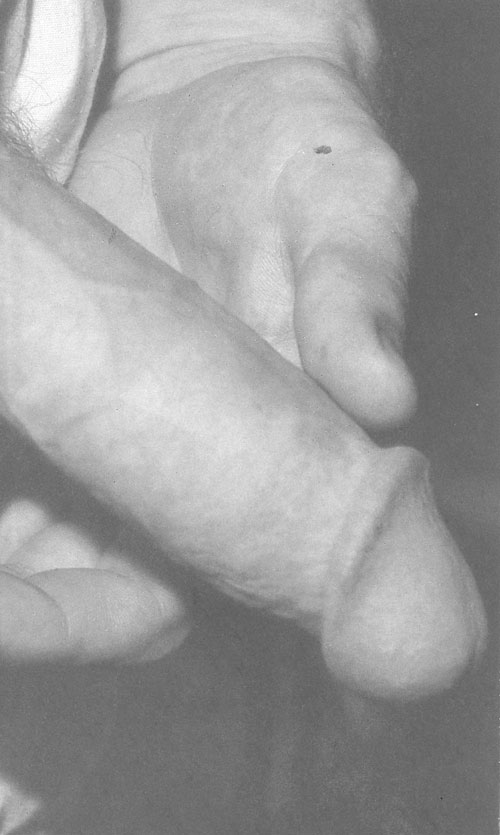
“You cannot help warming up to David Ashfield. He's totally unaffected and extremely masculine. He says that at some point in the future he would like to settle down with someone special.”
Also, like Joan Crawford, according to the interview, he answered every fan letter.
In fact, oddly, he kind of reminds me of her, not physically of course, nor did he put on the glamorous movie star persona, but because he took his work, revealed in his technique, so seriously. He was his technique.
And it worked, gloriously, in more than a hundred videos.
Also, like Joan Crawford, according to the interview, he answered every fan letter.
And, as well, Joan suffered stage fright; like David, she preferred to work in the studio.
At Bijouworld.com we carry many movies that feature David Ashfield, such as Therapy; Strange Places, Strange Things; Classmates; and our newly remastered Hot Splash.
Also check out our streaming site, Bijougayporn.com, for more hot David Ashfield action.




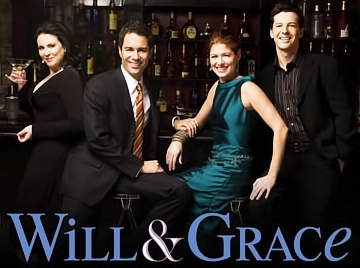
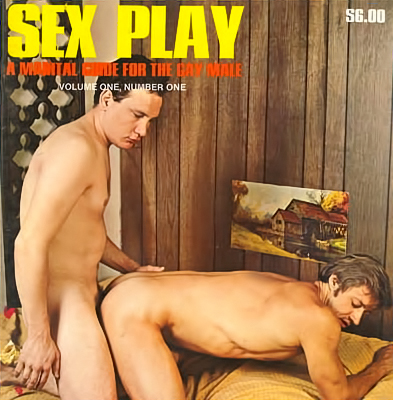
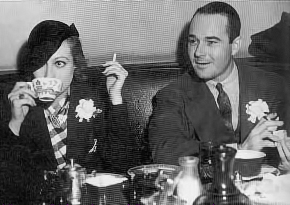 The bottom line in the above: A woman who is not or no longer attractive to straight men supposedly hangs out with gay guys and even hopes that she can somehow “reform” him. Think more like what the comic Roseanne said: thank God for gay guys because fat girls would have no one to dance with. Not exactly the Will and Grace dynamic, as Grace was young and attractive to straight men, more the ditzy young sidekick than the aging lonely dowager. Another fictional embodiment of this relationship, Robert Rodi's novel Fag Hag, humanizes the stereotype, he still maintains some of its brutally campy elements in the character of Natalie, the young overweight girl hopelessly in love with her gay friend and out for revenge when he finds the love of his life. Let's just say she makes Glenn Close's methods in Fatal Attraction look surprisingly amateur.
The bottom line in the above: A woman who is not or no longer attractive to straight men supposedly hangs out with gay guys and even hopes that she can somehow “reform” him. Think more like what the comic Roseanne said: thank God for gay guys because fat girls would have no one to dance with. Not exactly the Will and Grace dynamic, as Grace was young and attractive to straight men, more the ditzy young sidekick than the aging lonely dowager. Another fictional embodiment of this relationship, Robert Rodi's novel Fag Hag, humanizes the stereotype, he still maintains some of its brutally campy elements in the character of Natalie, the young overweight girl hopelessly in love with her gay friend and out for revenge when he finds the love of his life. Let's just say she makes Glenn Close's methods in Fatal Attraction look surprisingly amateur.
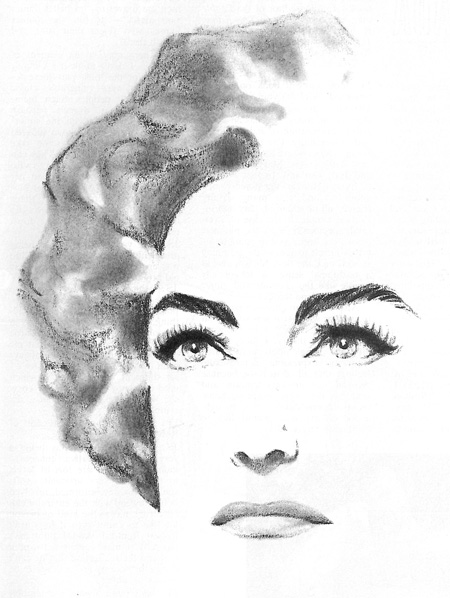

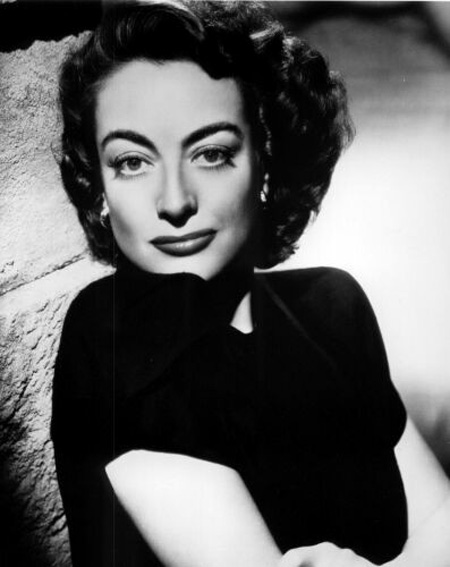
 Join our Email List
Join our Email List Like Us on Facebook
Like Us on Facebook Instagram
Instagram Youtube
Youtube Follow Us on Twitter
Follow Us on Twitter Follow us on Pinterest
Follow us on Pinterest